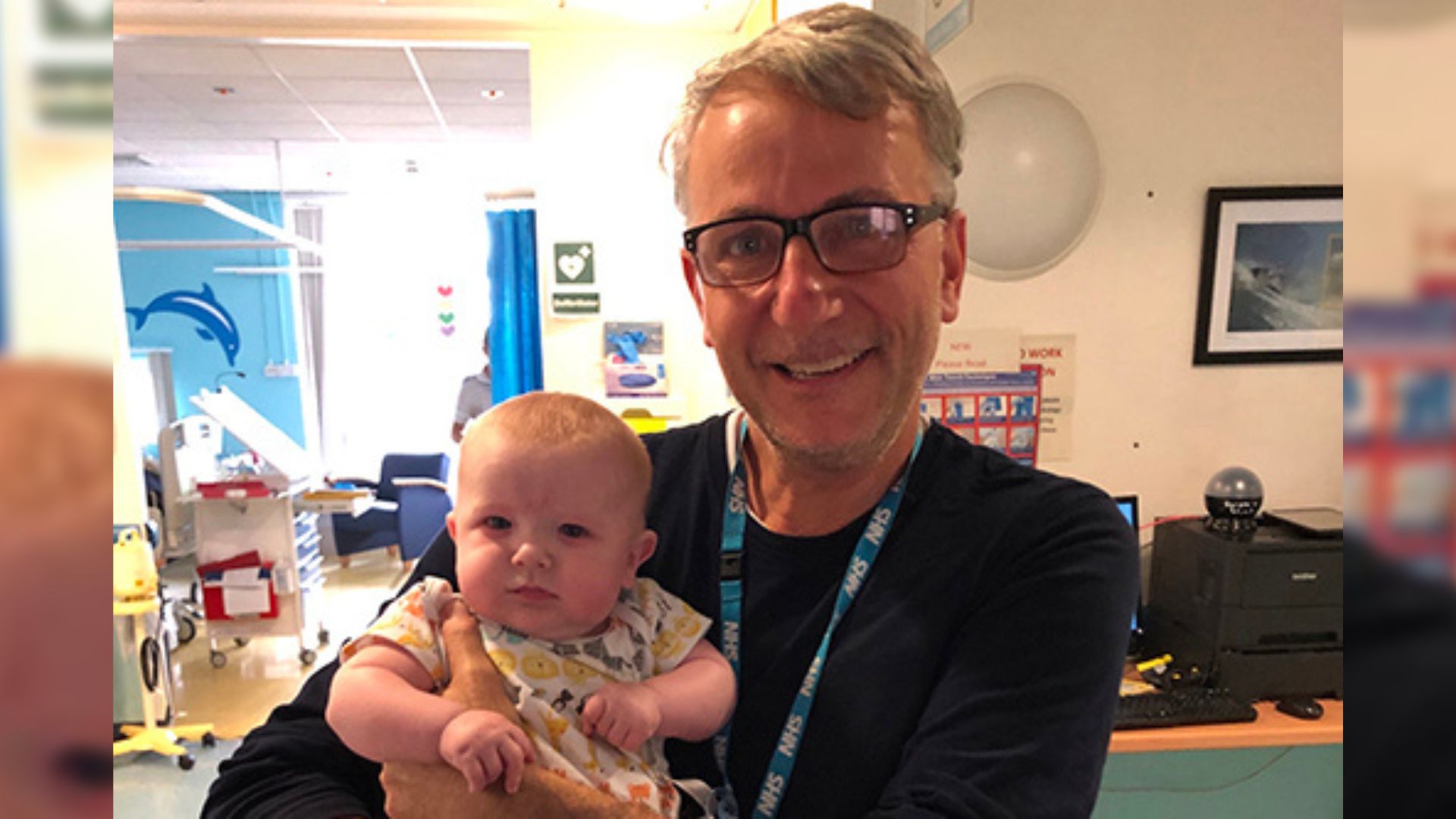In a 1st, baby's heart defect successfully treated with injected stem cells
Doctors treated a baby's heart defect with donated stem cells.

A baby born with a heart defect was the first person on record to receive an injection of stem cells to patch his heart after surgery. The boy, named Finley, is now 2 years old, and his doctors are developing a refined version of his stem cell treatment to mend more children's hearts in the future.
Congenital heart defects are the most common type of birth defect, affecting about 1% of children born in the U.S. and the same percentage in the U.K., according to the Centers for Disease Control and Prevention (CDC) and U.K. National Health Service. Baby Finley was born with a birth defect called "transposition of the great arteries," meaning the two major arteries meant to carry blood out of his heart had switched positions, according to a statement from the University of Bristol in England.
Finley underwent open-heart surgery four days after birth, to have the arteries moved to their normal positions. Complications arose after the 12-hour procedure, and as Finley's heart function worsened, he received ongoing treatment in an intensive care unit. After weeks of this care, Dr. Massimo Caputo, a professor of congenital heart surgery at Bristol Medical School, offered Finley's parents another option to consider: an injection of stem cells delivered directly into the heart.
"He warned us that he couldn't predict what the outcome would be. But we had absolutely nothing to lose," Melissa Hudd, Finley's mother, said in the statement. "We had to try and give Finley every possible chance to live."
Related: New stem cell treatment reverses vision loss in 2 patients
At the University of Bristol, Caputo had already been developing a "stem cell plaster," or patches containing donated stem cells that can be sewn into the heart during surgery. Unlike standard synthetic patches or replacement heart valves, in theory, these patches won't need to be replaced every so often as a child gets bigger. The plasters could help reduce or eliminate the need for children to undergo repeat open-heart surgeries, the researchers said.
"We are trying to create living tissue, whether it's a valve or a blood vessel or a patch, that will grow with the child, and that does not deteriorate," Caputo said in a profile published by the British Heart Foundation. "I think that would massively change their quality of life."
Sign up for the Live Science daily newsletter now
Get the world’s most fascinating discoveries delivered straight to your inbox.
The plasters have been shown to be safe in animals, and with grant money from the British Heart Foundation, Caputo aims to launch clinical trials in people within two years, according to the Bristol statement.
In Finley's case, he received stem cells "under compassionate grounds," not as part of a clinical trial, and he didn't receive the plaster that Caputo is currently developing. He instead received an injection of stem cells while undergoing his second open-heart surgery.
"Within two weeks of the stem cell treatment we noticed a change in Finley. He came home for the first time when he was just six months old on a machine that still helps him breathe at night," Hudd said. "We don't know what the future brings, but we are so grateful for Finley's life to be turned around after the stem cell treatment as he now has a chance at life he might not have had otherwise."

Nicoletta Lanese is the health channel editor at Live Science and was previously a news editor and staff writer at the site. She holds a graduate certificate in science communication from UC Santa Cruz and degrees in neuroscience and dance from the University of Florida. Her work has appeared in The Scientist, Science News, the Mercury News, Mongabay and Stanford Medicine Magazine, among other outlets. Based in NYC, she also remains heavily involved in dance and performs in local choreographers' work.










